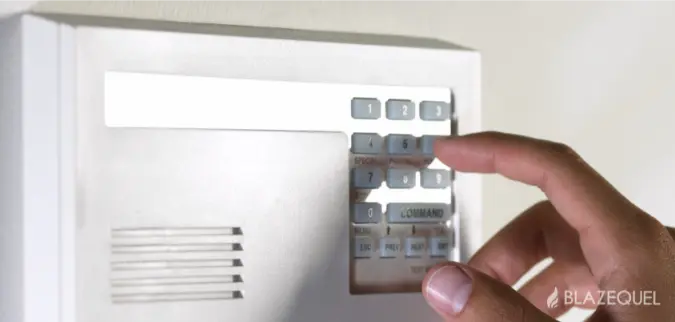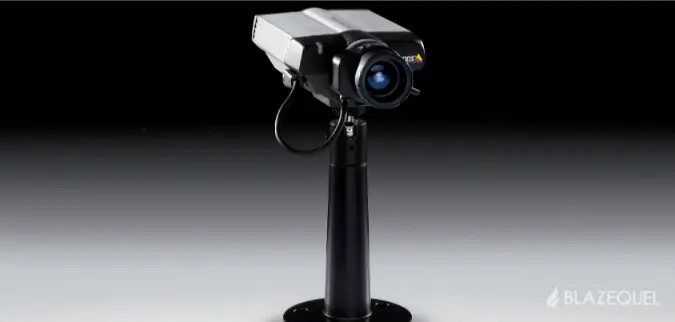
Intruder Alarms
Are you worried about the safety and security of your home or business? Are you tired of constantly feeling vulnerable
Lockdown Alarm means the ability to secure all areas of a building against a potential threat. Many view school lockdown procedures as a line of defense against an intruder with malicious intent. Whilst this is true, there are many other reasons lockdown may be required. These include:
School lockdown alarm systems are designed to close and lock all external doors, usually via a network of electro-magnets although other locking systems can be used. In addition, internal doors can be included in the system in case the intruder has already entered the building.
Every lockdown system is unique, and customized to your own school facility and activities/procedures onsite.
This largely depends upon the nature and layout of your facility, and the potential risks you perceive onsite. Typical actions in a school lockdown situation will include:
During a school lockdown, one of the most important things to consider is good communication. Uncertainly can bring out the most irrational and unpredictable aspects of human nature, whilst also delaying a correct response to the incident. That’s why it’s essential to consider the following points:
This partially depends upon the nature of the systems you already have onsite, your available budget and whether you’re looking at protecting a brand-new school build or new system fit out, or trying to achieve the best possible result with the systems you already have onsite.
REMEMBER – there are no set rules for school lockdown systems. It is a matter of finding out what is best for your facility. Choose an experienced and versatile partner who can help you find the best solution for your own specific requirements.
Firstly, remember that your School Lockdown Alarm is a more unique and application-specific solution than your fire alarm system, and you don’t have a set ‘code’ of rules to comply to. Typically, your lockdown alarm will be activated manually by points close to the main entrance doors.
Start off by looking at your site security strategy and the building layout. If the only place that an unauthorized person can gain access into your school during teaching hours is via the main reception, then you should have a manual ‘lockdown activation’ switch there, and possibly also in the staffroom and headteachers office.
If your facility is comprised of multiple separate buildings, you may also need additional manual ‘lockdown activation’ devices in these areas. Alternatively, what is the procedure for staff to contact the main reception / security office in an emergency requiring a full school lockdown?
Additionally, you need to be able to avoid false school lockdown alarms by malicious or accidental activation. For this reason, we recommend keeping your lockdown activation points with in staff-only areas, or using a key-activated type call point unit (with all staff carrying the key) to help prevent false alarms.
There are a wide range of options for raising the school lockdown alarm which we’ll cover below, but first you need to consider these points:
If not, would proper staff training ensure that they can accurately distinguish between the different alarm sounds?
Voice alarms are one of the best ways of clearly delivering specific messages for specific alarm types. With multiple message alerts available on a single system, voice alarms can deliver different alerts for lockdown, fire alarm and any other requirement.
FOR SCHOOLS AND EDUCATIONAL FACILITIES
The two alarms have completely opposite meanings:
Evacuating the building means exposing yourself to the intruder! Staying in the building means potentially running the gauntlet with fire! So how do you find any middle ground?
The concern of course is, that the fire alarm system could be used maliciously – evacuating the building during a lockdown, and forcing persons into a potentially harmful or dangerous situation. However, is it safe or practical to ignore a fire alarm?
This is a complex issue, which can largely depend upon your facilities layout, the systems/procedures you are using for your lockdown and the fire alarm system itself. It may be possible to;
Whatever procedure is in place, every responsible person must be aware and trained in what to do, otherwise the resulting confusion could cause a potentially harmful and dangerous situation occurring.
NaCTSO (National Counter Terrorism Security Office) guide on lockdown procedures. Download NaCTSO Guide Here
We would also recommend that you download the Central Bedfordshire Council’s guide “Lockdown Procedures, Guidance to schools and academies – (November 2013)”. This document provides some useful guidance on creating your own lockdown strategy.
For more information or to book a free site visit to discuss your requirements, please don’t hesitate to contact us.
Don’t hesitate to reach out to us, or you can easily fill out the form below. We’re here to assist you.


Are you worried about the safety and security of your home or business? Are you tired of constantly feeling vulnerable

CCTV systems is the ever-alarm solution for keeping your premises, employees and most valuable assets safe.

Access control systems are essential to the security of your business and the safety of your staff. Make sure it’s